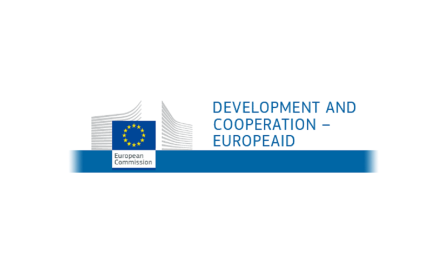What does it take to bring together Israel and Palestine, or Armenia and Turkey? Despite geopolitical conflicts, local authorities from these historical foes are among those working together on Cross-Border Cooperation projects as part of the European Neighbourhood Policy.
“We have Palestine and Israel cooperating, together with Arabic countries, in the same programme,” said Bodil Persson, Head of Cross-Border Cooperation (CBC) at EuropeAid. “You feel that the will is there and they try to overlook the political difficulties.”
An Israeli regional council and a Palestinian not-for-profit organisation are among eight partners in a project to develop an organic waste management system in tourist areas close to agricultural activity. In the West Bank for instance, more than 2000 tonnes of biowaste will be treated at two small composting plants to generate an expected 1400 tonnes of compost for nearby farms in the Jordan Valley. Midway through the implementation stage, a Best Practice Database has been created to help similar practices emerge in other Mediterranean zones.
In a separate initiative, Israeli and Palestinian researchers – together with colleagues from Portugal and Italy – are promoting Local Sustainable Economic Development among policy makers.
And elsewhere, Turkey and Armenia have worked together on the Black Sea Tradenet network, designed to develop economic and trade cooperation in the Black Sea Basin.
The European Neighbourhood and Partnership Instrument, which contributes most of the projects’ funding, has its roots in the European Union enlargement of 2004. As the EU grew to encompass 10 new countries, including Poland, Lithuania, and Slovakia, there was a need to avoid creating new divisions between areas made richer by now being inside Europe, and their neighbours.
“Regions that were already poor from the beginning risked to become even poorer with the enlargement,” Ms Persson said.
The aim was to replicate the cross-border projects between members of the EU, but this time on the borders of the Union itself. Thirteen programmes were chosen for the 2007-2013 period at land borders, sea crossings and sea basins, to promote economic and social development on both sides.
At the 12th European Week of Regions and Cities, held last month in Brussels, three of the 984 projects supported under these programmes presented their work.
MedGeneration fostered links between entrepreneurs in Europe and their Middle-Eastern countries of origin through seminars and missions to assess the economic attractiveness of Lebanon, Palestine, and Jordan. RescOp improved maritime safety between Russia, Finland and Estonia in the Gulf of Finland by creating maps, testing responsiveness and creating better rescue coverage. While “Not for Sale – say stop to human trafficking”, led by Save the Children in Romania, aimed to improve CBC between Romania, Ukraine and Moldova to prevent human trafficking.
More information on the “Not For Sale” project, which included public awareness campaigns and information targeting young students, is available in a capacity4dev article, here.
CBC is unique because it is the participating countries, not the Commission, that decide which projects to fund under each programme. Indeed, the programme has a very specific management mode - "shared management" - where the EU Member States directly manage the calls for proposals with the partner countries, and decide independently on the projects to be financed. The Commission is only participating as an observer in the process.
“Our CBC programmes under external cooperation give the partner countries full ownership over how the money should be spent,” Ms Persson said. And she believes countries are getting more committed as a result, particularly local and regional authorities, which are the main targets of the funds.

Training Voluntary SAR, Pic: Kronstadt Society
With a total budget of slightly more than €1 billion the Commission is now selecting 17 programmes for the 2014-2020 funding round, to be approved by the first half of 2015. It is a time to consider what lessons to draw from the first round of projects.
Ms Persson said some projects had no CBC impact at all, and this required renewed focus.
“We are not implementing traditional development products with transfer of know-how, technology or whatever,” she said. “If there is no CBC impact the product is dead from the beginning.”
And there is a need to harmonise the rules applied under the CBC programmes with those applied by the Commission’s Directorate General for Regional Policy. At present the same countries face different rules under different programmes, leading to confusion.
Lastly, the Commission is investigating how to create more knowledge sharing between different programmes supported under CBC. One method is the Cross-Border Cooperation (Neighbourhood) Group on capacity4dev.eu, which allows an exchange of best practices and up-to-date information.
|
In the period 2007-13 the European Territorial Co-operation objective (formerly the INTERREG Community Initiative) covered three types of programmes: - 53 cross-border co-operation programmes along internal EU borders. ERDF contribution: €5.6 billion. - 13 transnational co-operation programmes cover larger areas of co-operation such as the Baltic Sea, Alpine and Mediterranean regions. ERDF contribution: €1.8 billion. - The interregional co-operation programme (INTERREG IVC) and 3 networking programmes (Urbact II, Interact II and ESPON) cover all 28 Member States of the EU. They provide a framework for exchanging experience between regional and local bodies in different countries. ERDF contribution: €445 million. The European Territorial Co-operation objective is financed by the European Regional Development Fund (ERDF) and supports cross-border, transnational and interregional co-operation programmes. The budget of €8.7 billion for this objective accounted for 2.5% of the total 2007-13 allocation for cohesion policy, including the allocation for Member States to participate in EU external border co-operation programmes supported by other instruments (IPA and ENPI). For more information click here. |
This collaborative piece was drafted with input from Bodil Persson and Nathalie Thiberge with support from the capacity4dev.eu Coordination Team. Teaser image courtesy of Luca Martino.




Log in with your EU Login account to post or comment on the platform.